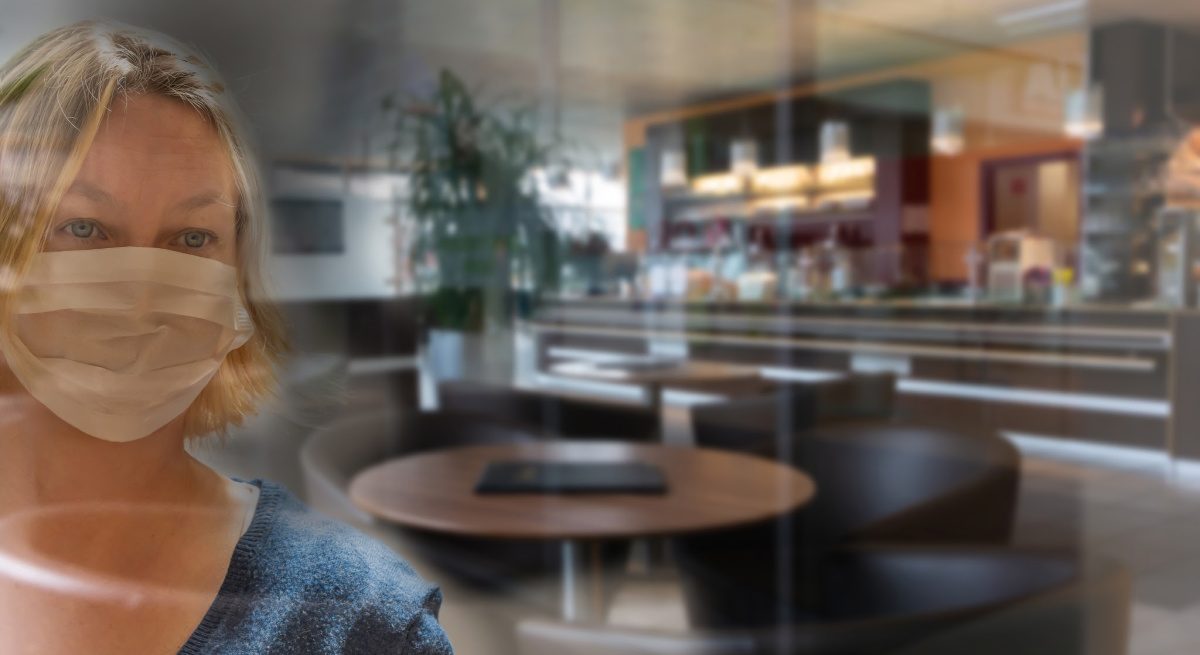Three Ways Post-Pandemic Customers Will Permanently Change the Restaurant Industry
5 Min Read By Mathieu Stevenson
"COVID-19 has disrupted, and will likely continue to disrupt, business models and plans. But in some ways, it’s accelerated the adoption of trends that would have taken four to five years to become a reality."
The restaurant industry has been one of the hardest hit by COVID-19, with sales dropping 40 percent during the month of May, according to Black Box Intelligence. While states have opened back up and businesses are navigating their "new normal," they’re now facing an uptick in COVID-19 cases. The restaurant industry is no exception. Particularly as they’re learning how to best operate amidst new outbreaks to create the dining experiences patrons expect.
The restaurant business has permanently changed. Here are three new things consumers expect:
Consumers Expect to Dine in the Way They’re Most Comfortable
People have been both eager and hesitant to venture back out into the world as stay-at-home orders have lifted. However, a surge in hot spots means the dining experience will continually evolve. Maintaining strict social distancing protocols is more important than ever. Some of these changes have been a long time coming, while others surged in popularity at the height of the pandemic.
Restaurants have adopted a delivery/pickup model to meet the needs of their customers. In fact, 70 percent of consumers are ordering takeout directly from restaurants amidst the pandemic. As consumers cautiously begin to eat out at local restaurants, this new model will likely remain popular. This has created an increased demand for food running and delivery jobs that didn’t exist before. A recent survey found 72 percent of employers have had to hire for new roles.
Contactless payments is another trend that’s surged. Be it Paypal, Apple Pay, Square or over-the-phone payments, restaurants have implemented new options to reduce the amount of touchpoints. As a result, 52 percent of companies have deployed new payment processing methods. This is another step that requires restaurants to examine how they staff up to handle increased calls for orders and payments alike.
Consumers Expect Their Health and Safety to be Your First Priority
Health and safety has always been a huge priority for restaurants, but COVID-19 has redefined “sanitary practices” across the country. As restaurants open, patrons expect there to be a plan in place to operate safely. The good news is that a recent survey found an estimated 85 percent of employers had a plan in place to reopen. Getting this right is crucial, though, given more than half of employees are concerned about health and safety. This is especially true as certain cities have become hot spots.
Restaurants are also implementing different protocols to adhere to depending on their capacity. In fact, 70 percent of patrons say they feel more comfortable if there is more space when dining in. Some reopening plans include:
- Communication and (re)training: Managers are required to communicate new regulations, as well as the retraining requirements, staff need to go through in order to return to work. From PPE to greeting methods to personal hygiene, it’s a whole new world for wait staff.
- Social distancing requirements: Outdoor seating options have become more important, and restaurants that don’t have this option are navigating how to maximize outdoor space like parking lots, sidewalks and more. Reducing party sizes, setting up plastic barriers and spacing tables six feet apart are just some of the requirements patrons will continue to see. There’s no one size fits all, and restaurants are having to rethink their layout and restaurant flow.
- Reservations to avoid crowd gatherings: Restaurants are now open to a certain capacity, so reservation systems (if they weren’t already) have been implemented. If they don’t have an existing reservation system and are using a “first come first serve” seating option, managing waiting crowds will be top of mind.
Consumers Still Expect Excellent Customer Service
Restaurants had to furlough staff when they shut their doors in March. In fact, as of June 15, sit-down restaurant job postings were down 52 percent from their pre-coronavirus levels. Sit-down restaurant jobs are coming back slowly as consumers are excited to enjoy a meal out. As restaurants make hiring plans, leaders need to examine the benefits of flexible hiring based on demand.
Each state has different rules as to what their capacity will look like for the foreseeable future, but part of these rules will be contingent on consumer demand. Dining establishments will need to be able to scale up or scale down their workforces quickly and efficiently. This is critical to not only balance front or back of the house needs, but to maintain high-quality customer service. Here are a few things to keep in mind as businesses look to rehire:
- Determine appropriate staffing levels: Depending on capacity, restaurants may not need their entire staff back at once, so they should evaluate the number of people needed regularly. Restaurants may hope their furloughed or laid-off workers will return to work when called upon, but only 34 percent plan to return to their former employers.
- Activate a remote hiring process: Depending on how much effort it will take to rehire, restaurants should consider developing a remote hiring process (phone interviews, video interviews, AI-based matching) to staff up quickly. With 52 percent of workers concerned about how interviews will be held, virtual hiring eliminates the challenges of interviewing at a social distance and hiring many staffers at once. The recent adoption of videoconferencing makes more acceptable to use video interviews and is one way to ease future employee fears.
- Get creative with staffing: Restaurant managers and owners may need to consider hiring employees with experience outside of the restaurant industry. Given our new circumstances, a person’s dedication, hard work and positive attitude will go a long way in any role. As of June 16, companies have experienced a 72 percent increase in customer demand, leading to a surge in hiring.
It’s also important to think about what potential employees are looking for in job postings. An estimated 55 percent of workers say they want to see safety/sanitation precautions in a job description, so addressing their concerns can help you attract the right talent and make staff feel safe before even applying for a job.
COVID-19 has disrupted, and will likely continue to disrupt, business models and plans. But in some ways, it’s accelerated the adoption of trends that would have taken four to five years to become a reality. Restaurants are navigating things day-by-day and will do what they can to help ease employee and patron hesitations while still planning for tomorrow.
As consumers continue to demand higher standards of safety/hygiene, social precautions will be the new norm for restaurants. The good news is 87 percent of people say dining out is one of the things they miss the most. Consumer demand will drive the restaurant rebound as the economy continues to open. As for the many rules and regulations that have been implemented throughout the pandemic, most could stick as the country navigates this "new normal." Only time will tell.


